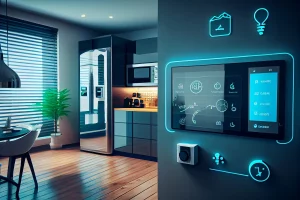In recent years, voice assistants have become an integral part of our daily lives, revolutionizing how we interact with technology. From setting reminders to controlling smart home devices, these virtual assistants have simplified many routine tasks. But as we look toward the future, voice assistants are poised for even greater transformation, with significant advancements that will make them more personalized, intelligent, and pervasive.
In this article, we’ll explore the key trends that are shaping the future of voice assistants and analyze how these changes will impact users, industries, and technology as a whole.
1. Increased Personalization
One of the most anticipated trends in the evolution of voice assistants is increased personalization. As these virtual assistants become more sophisticated, they will learn from user behavior and preferences, delivering tailored responses and suggestions. For example, based on past interactions, a voice assistant may recommend morning routines, preferred music playlists, or personalized shopping lists.
Personalization will make interactions more intuitive, enhancing user satisfaction. However, it also raises concerns about data privacy and security, as the collection of personal data to create customized experiences may lead to potential misuse or breaches.
2. Deeper Integration with Smart Home Devices

Voice assistants are already integrated with basic smart devices like lights and thermostats, but the future promises deeper integration across all smart home systems. Voice assistants will act as central hubs, allowing users to control everything from home security to kitchen appliances with simple voice commands.
This level of integration will make managing multiple devices easier and more seamless. However, compatibility issues between devices from different manufacturers may present challenges. A fully connected home environment is within reach, offering more convenience and automation in daily life.
3. Enhanced Natural Language Processing
As voice assistants evolve, one of the most important developments will be in natural language processing (NLP). Currently, voice assistants handle basic commands effectively, but future advancements will allow them to understand and process more complex queries with greater accuracy. This will create a more natural, conversational interaction between users and their virtual assistants.
Better NLP will not only make voice assistants more useful but also more accessible to users who prefer a more conversational style of communication. Overcoming the limitations of current NLP systems, such as handling nuanced language or dialects, remains a challenge, but the potential for improved communication is vast.
4. Expansion into New Industries
Voice assistants are already being used in industries like healthcare and finance, but their future applications are expected to spread across even more sectors, including retail, travel, and education. By providing users with quick access to services, virtual assistants will become indispensable in various industries, enhancing customer experiences and streamlining operations.
For instance, in retail, voice assistants could help shoppers browse products, compare prices, and make purchases. In travel, they could assist with booking flights and hotels, offering personalized travel recommendations. The expansion of voice assistants into these areas will create new opportunities for businesses and consumers alike.
5. Improved Multimodal Capabilities
Currently, most voice assistant interactions are voice-based. However, the future will see the rise of multimodal capabilities, allowing users to interact through voice, touch, and gestures. This will enable more flexible and efficient interactions, particularly in situations where voice commands alone may not be practical.
For example, users could perform tasks on a smart display by speaking a command and then fine-tuning the results with a touch or gesture. This multimodal approach will make voice assistants more versatile and user-friendly, offering greater control over tasks.
6. Enhanced Security and Privacy Features

As voice assistants become more integrated into our daily lives, there will be growing concern about security and privacy. In response, developers are likely to introduce enhanced features, such as biometric authentication (e.g., voice or facial recognition) and stronger encryption measures to protect sensitive data.
These advancements will build trust among users, encouraging wider adoption of voice assistants in areas where data security is critical, such as healthcare and financial services. Balancing security with ease of use will be crucial to ensuring user confidence.
7. Voice Assistants in the Workplace
Voice assistants are already streamlining workplace tasks like scheduling meetings and taking notes, but their future role will be even more significant. As they become more integrated into workplace systems, voice assistants will assist with workflow management, data analysis, and even project collaboration.
By reducing administrative burdens, these virtual assistants will allow employees to focus on more strategic tasks, improving productivity and efficiency. However, some workplaces may face resistance to adopting these technologies, particularly among employees concerned about automation replacing human roles.
8. Voice Assistants in Healthcare
In the healthcare sector, voice assistants have the potential to revolutionize patient care. From helping patients schedule appointments to providing medication reminders and offering health tips, these assistants can significantly enhance the patient experience. In the future, voice assistants could even monitor health conditions and alert medical professionals to potential issues.
This integration could make healthcare more accessible and improve patient outcomes, but ensuring the accuracy and security of health-related data will be essential to their success.
9. Voice Assistants in Education
Voice assistants also hold great promise in education. By offering personalized learning experiences, virtual assistants can support students in completing assignments, providing explanations, and offering additional resources. In classrooms, they could help teachers manage schedules, answer questions, and facilitate learning in real time.
This trend has the potential to transform education, making learning more engaging and accessible. However, ensuring that these tools are effectively integrated into diverse learning environments will be key to their success.
10. Continued Innovation
The future of voice assistants is bright, with continued innovation driving new features and capabilities. As artificial intelligence and machine learning continue to advance, voice assistants will become even more sophisticated, providing users with personalized, intuitive, and valuable assistance.
With ongoing developments in natural language processing, security, and multimodal capabilities, voice assistants are set to play an even larger role in our daily lives and across industries.
Comparative Table: Predictions for the Future of Voice Assistants
| Aspect | Current State | Future Predictions |
|---|---|---|
| Personalization | Basic personalization based on simple user preferences. | Increased personalization with virtual assistants learning user behavior and preferences. |
| Smart Home Integration | Integration with basic smart devices like lights, thermostats, etc. | Deeper integration with all smart home devices, acting as a central hub. |
| Natural Language Processing | Able to understand basic commands and questions. | Enhanced natural language processing for more complex, conversational interactions. |
| Industry Expansion | Limited use in industries like healthcare and finance. | Expansion into more sectors like retail, travel, and education. |
| Multimodal Capabilities | Mostly voice-based interactions. | Improved multimodal interactions with voice, touch, and gesture support. |
| Security and Privacy | Basic security features like password protection. | Advanced security, including biometric authentication and encryption. |
| Workplace Use | Used for scheduling meetings and simple tasks. | Greater role in streamlining workflows and providing assistance in workplaces. |
| Healthcare | Provides basic information and reminders. | Used for appointment scheduling, health management, and medical information access. |
| Education | Limited use in providing information or reminders. | Personalized assistance for students, helping with homework and providing educational resources. |
| Innovation | Gradual updates and improvements. | Continued innovation leading to more sophisticated, intuitive virtual assistants. |
Analysis Table: Impact and Trends in Voice Assistant Technology
| Trend | Impact | Challenges | Opportunities |
|---|---|---|---|
| Increased Personalization | Enhances user experience by delivering more relevant suggestions. | Risk of over-reliance and privacy concerns with data collection. | Can create more seamless, user-tailored experiences. |
| Deeper Smart Home Integration | Centralizes smart device management, making home automation easier. | Complexity in managing multiple devices from different manufacturers. | Streamlines smart home control, promoting a more connected lifestyle. |
| Enhanced Natural Language Processing | Makes interactions feel more natural and intuitive. | Handling of complex queries may still have limitations. | Provides more responsive and conversational virtual assistants. |
| Industry Expansion | Offers services in new industries, improving efficiency. | Adapting technology to industry-specific requirements. | Broadens the scope of voice assistant applications across sectors. |
| Improved Multimodal Capabilities | Offers more ways for users to interact with devices. | Developing seamless cross-modal interactions. | Allows for more versatile and accessible user interactions. |
| Enhanced Security Features | Protects user data, increasing trust in the technology. | Balancing security with user convenience. | Encourages wider adoption, especially in industries handling sensitive information. |
| Workplace Integration | Improves productivity by automating routine tasks. | Resistance to adoption in some workplaces. | Enhances workflow efficiency, reducing administrative workload. |
| Healthcare Integration | Provides better patient support and accessibility to health information. | Accuracy and security of health data remain concerns. | Revolutionizes patient care, making health management more accessible. |
| Educational Use | Supports personalized learning experiences. | Ensuring effectiveness across different learning environments. | Offers tailored educational assistance and support for students. |
| Continued Innovation | Keeps technology relevant and increasingly sophisticated. | Keeping up with rapid technological advancements. | Opens doors for new features and capabilities, enhancing usability. |
Conclusion
The future of voice assistants is full of exciting possibilities. From increased personalization and deeper smart home integration to advancements in security and natural language processing, voice assistants are set to become an even more essential part of our lives. As these technologies continue to evolve, their role in industries like healthcare, education, and the workplace will expand, offering innovative solutions and streamlining operations.
With continued innovation, voice assistants will become more versatile, intuitive, and indispensable, enhancing the way we interact with technology for years to come.




